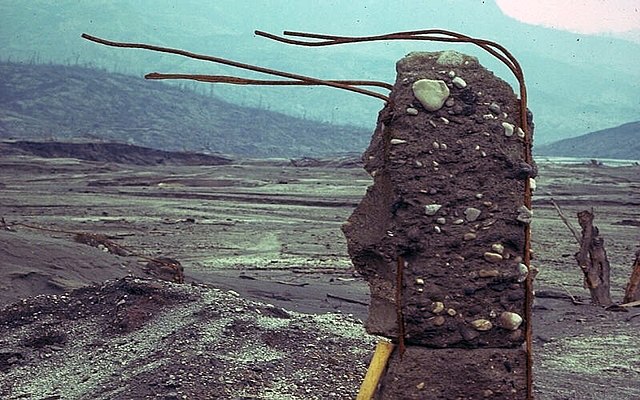A pyroclastic flow is a fast-moving current of hot gas and volcanic matter that flows along the ground away from a volcano at average speeds of 100 km/h but is capable of reaching speeds up to 700 km/h. The gases and tephra can reach temperatures of about 1,000 °C (1,800 °F).
Pyroclastic flows sweep down the flanks of Mayon Volcano, Philippines, in 1984
Pyroclastic rocks from the Bishop tuff; uncompressed with pumice (on left), compressed with fiamme (on right)
Building remnant in Francisco Leon destroyed by pyroclastic surges and flows during eruption of El Chichon volcano in Mexico in 1982. Reinforcement rods in the concrete were bent in the direction of the flow.
A scientist examines pumice blocks at the edge of a pyroclastic flow deposit from Mount St. Helens
Tephra is fragmental material produced by a volcanic eruption regardless of composition, fragment size, or emplacement mechanism.
Volcanic tephra at Brown Bluff, Antarctica (2016)
Tephra horizons in south-central Iceland: The thick and light-coloured layer at the centre of the photo is rhyolitic tephra from Hekla.
A 2007 eruptive plume at Mount Etna produced volcanic ash, pumice, and lava bombs.
Rocks from the Bishop tuff, uncompressed with pumice on left; compressed with fiamme on right







